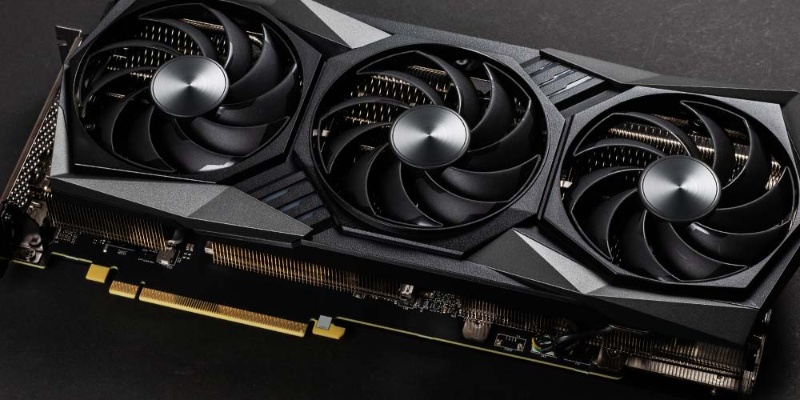I. Introduction: Beyond the Spec Sheet
Not all GPU rankings are created equal. While you might see graphics cards ranked for gaming performance or 3D rendering capabilities, these lists often tell a misleading story for AI developers. The truth is, GPU performance varies dramatically based on AI-specific workloads. A card that tops the charts for gaming might stumble when training large language models or handling massive inference workloads.
In this guide, we’re decoding current GPU rankings through the lens of real-world AI performance. We’ll cut through the marketing specs to show you which hardware truly delivers for machine learning tasks. But here’s the key insight you won’t find on most benchmark sites: raw specs matter, but intelligent resource management matters even more for achieving maximum return on your AI investment. The best GPU in the world won’t help your business if it’s sitting idle half the time.
II. Understanding GPU Benchmark Rankings for AI
When evaluating GPUs for AI work, traditional gaming metrics like frames-per-second become virtually meaningless. Instead, you need to focus on the specifications that directly impact machine learning performance.
Three metrics matter most in AI benchmarks:
- TFLOPS (Trillions of Floating Point Operations Per Second): This measures raw computational power, specifically for the matrix multiplication operations that form the backbone of neural network training. Look for TFLOPS ratings for FP16 (half-precision) and FP8 (8-bit precision) operations, as these are commonly used in AI training to speed up computation while maintaining accuracy.
- Memory Bandwidth: Think of this as the width of the highway connecting the GPU’s processors to its memory. Even with a powerful processor, if data can’t flow quickly enough, your GPU will sit idle waiting for information. Higher bandwidth means faster training times and more efficient processing.
- VRAM Capacity: This determines how large of a model you can train or run. Training a billion-parameter language model requires significant memory to store the model weights, gradients, and optimizer states. Insufficient VRAM means you either can’t run your model or must use techniques like model parallelism that add complexity and slow down training.
It’s crucial to differentiate between gaming benchmarks and AI-specific metrics. While gaming performance focuses on graphics rendering speed, AI performance is measured by training throughput (how many training samples per second the GPU can process) and inference latency(how quickly the GPU can generate predictions once trained).
Understanding these metrics sets the stage for why specialized AI tools are essential. Even the highest-rated GPU will underperform if not managed properly within a cluster environment.
III. NVIDIA GPU Rankings 2025: The AI Power Scale
Based on comprehensive AI workload testing, here’s how current NVIDIA GPUs rank for serious machine learning work:
Tier 1 (Enterprise Elite): H200 & H100 – For Foundation Model Training
The NVIDIA H200 and its predecessor H100 represent the pinnacle of AI performance in 2025. These are not merely GPUs—they’re AI supercomputers on a single chip. With dedicated Transformer Engines that accelerate LLM operations and massive VRAM configurations (H200 offers up to 141GB of HBM3e memory), these cards are engineered for one purpose: training massive foundation models in record time. If you’re building the next GPT-class model or working with multi-modal systems processing billions of parameters, this tier is non-negotiable. The performance difference isn’t incremental—it’s transformative, often delivering 3-4x faster training times compared to previous generation data center GPUs.
Tier 2 (Pro Workhorse): A100 – For Scalable Production Workloads
The NVIDIA A100 may be from the previous generation, but it remains the reliable workhorse powering countless production AI systems. With 40GB or 80GB VRAM options and proven stability across diverse workloads, the A100 offers the perfect balance of performance and reliability for enterprise deployment. Many cloud providers continue to build their AI offerings around A100 instances because they deliver consistent, predictable performance for training substantial models and handling high-volume inference. For most businesses not pushing the absolute boundaries of model scale, the A100 represents the sweet spot for price-to-performance ratio in professional environments.
Tier 3 (Development Powerhouse): RTX 4090 – For Prototyping and Research
Don’t let the “gaming” label fool you—the GeForce RTX 4090 is a legitimate AI development powerhouse. With 24GB of GDDR6X memory and impressive computational throughput, this card delivers exceptional value for researchers, students, and development teams. While it lacks the specialized AI features and multi-GPU scalability of its data center counterparts, the RTX 4090 provides enough power to prototype, experiment, and even train respectable-sized models locally. For teams on a budget or those needing development stations before pushing to production clusters, the 4090 offers tremendous capability.
In real performance terms, for training a mid-sized LLM with 13 billion parameters:
- An H100 cluster might complete training in 2-3 days
- A100 systems would likely take 5-7 days
- A single RTX 4090 might require 3-4 weeks
IV. The Critical Factor Everyone Overlooks: Resource Management
Here’s the hidden truth that rarely makes it into GPU reviews: top-tier GPUs often perform far below their potential in real-world environments due to poor cluster utilization. You can invest in a fleet of H100s, but if your system can’t keep them efficiently occupied, you’re literally burning money while waiting for jobs to schedule.
The problem lies in inefficient resource management. Common issues include:
- GPU Stranding: A training job requests 4 GPUs but only efficiently uses 2, leaving the others idle but unavailable to other tasks
- Resource Fragmentation: Multiple smaller jobs that could run simultaneously instead wait in queue because the scheduling system can’t pack them efficiently onto available hardware
- Inefficient Scaling: Linear performance increases when adding GPUs instead of the near-linear scaling that’s possible with proper parallelization strategies
These management issues can easily negate the 2x benchmark advantage a higher-ranked GPU might offer. In practice, a well-managed cluster of A100s can often outperform a poorly managed H100 setup—and at a fraction of the cost.
This is where intelligent management platforms transform raw hardware power into practical business results. The difference between theoretical benchmarks and real-world performance often comes down to the software layer managing your GPU resources.
V. WhaleFlux: Making Your GPU Investment Count
This is where WhaleFlux changes the equation. Think of WhaleFlux as the performance multiplier for your GPU investment—the intelligent layer that ensures you extract every ounce of capability from your hardware, whether you’re running H200s, A100s, or RTX 4090s.
WhaleFlux is a smart GPU resource management tool designed specifically for AI enterprises. It enhances your GPU’s effective performance through several key mechanisms:
- Dynamic Load Balancing: WhaleFlux automatically distributes workloads across your entire GPU cluster, ensuring that no single card becomes a bottleneck while others sit idle. Whether you’re running a heterogeneous mix of H100, H200, and A100 systems or a uniform cluster, WhaleFluxoptimizes resource allocation in real-time.
- Intelligent Job Scheduling: Instead of the first-come, first-served approach that plagues many AI teams, WhaleFlux uses sophisticated algorithms to pack jobs onto available hardware like a master puzzle solver. It understands dependencies, priorities, and resource requirements to minimize queue times and maximize throughput.
- Real-time Monitoring and Optimization: WhaleFlux provides unprecedented visibility into your cluster’s performance, identifying inefficiencies and opportunities for optimization that would be invisible to human operators.
The cost-efficiency impact is dramatic: better utilization directly translates to lower cost per training job. By reducing idle time and improving scheduling efficiency, WhaleFlux typically helps teams achieve 30-50% better utilization of their existing hardware—effectively giving them the equivalent of additional GPUs without the additional cost.
VI. Strategic GPU Selection: Matching Rankings to Your Needs
With these rankings in mind, here’s a practical framework for selecting the right GPU strategy for your organization:
- Choose H200/H100 for: Large-scale foundation model training, cutting-edge research pushing the boundaries of AI, and applications where time-to-train is a critical competitive factor.
- Choose A100 for: Balanced production workloads, enterprise AI deployment, fine-tuning large models, and scenarios where proven reliability and widespread ecosystem support matter most.
- Choose RTX 4090 for: Development, testing, prototyping, academic research, and situations where budget constraints prohibit data-center GPUs but substantial local compute is still required.
The smartest approach is to use WhaleFlux as your unified platform to access and optimize across all these tiers. Through WhaleFlux, you can access our curated fleet of NVIDIA GPUs—including the top-ranked H100, H200, A100, and RTX 4090—via straightforward purchase or rental arrangements. To ensure consistent performance and cluster stability, we offer these resources with a minimum one-month commitment, providing the dedicated power that serious AI work demands without the inefficiency of hourly provisioning.
VII. Conclusion: Rankings Start, Management Finishes
GPU rankings provide essential guidance for hardware selection, helping you understand the raw capabilities of different options. But in the real world of AI development, intelligent resource management ultimately determines your actual performance and return on investment.
True power comes from combining top-ranked GPUs with sophisticated optimization. The best hardware paired with poor management delivers mediocre results, while well-managed capable hardware often outperforms poorly managed elite equipment.
Ready to move beyond theoretical rankings and achieve real-world AI performance? Explore WhaleFlux’s optimized GPU platform today. Access properly ranked and fully managed GPUs through our integrated solution, and start turning hardware potential into practical business results.

